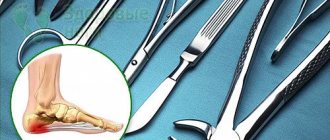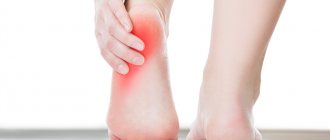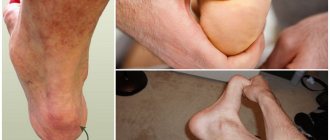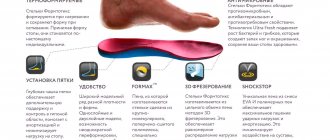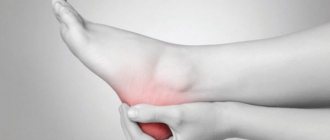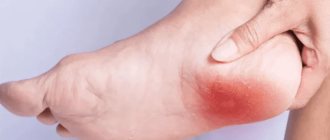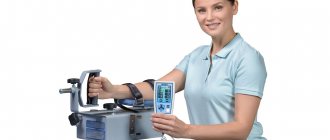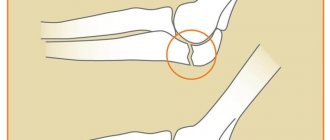Plantar fasciitis can be successfully treated with conservative methods in 90-95% of patients. But in some cases, the only way to get rid of a spur is through surgery.
Spur surgery is not difficult from the surgeon’s point of view, however, it is often extremely painful for patients and requires long-term rehabilitation.
If you have a heel spur, surgical treatment of which is the only way to get rid of the growth, then in this article we will talk about the types of operations and how to quickly recover and return to normal life.
When is a heel spur removed surgically?
All over the world, doctors are trying to avoid heel fascia surgery by using various treatment methods. Excellent results are obtained by crushing the heel spur with a laser, shock wave therapy, and taking steroid and non-steroidal drugs to reduce inflammation.
As a rule, if you follow all the doctor’s recommendations, you can overcome fasciitis in 1-6 months. The effectiveness of conservative treatment methods largely depends on how doctors treat heel spurs. If treatment with one doctor does not bring benefit, then it is advisable to contact another specialist.
Unfortunately, for some people, therapy and physical procedures do not bring a positive effect, no matter what doctor they see.
The spur growth increases in size, causing unbearable pain. The quality of life and general well-being of the patient deteriorates significantly. In this case, the only way to get rid of the spur is to surgically remove it.
Doctors consider the following indications for surgery:
- conservative treatment does not provide effect for more than 6 months;
- the person experiences excruciating pain;
- bone growth seriously limits movement;
- the patient cannot go to work, school, i.e. deprived of a normal life.
In these cases, if surgery is not performed, a heel spur, the surgical treatment of which is vital, can lead to disability, loss of social connections and professional degradation.
Symptoms of heel spurs
The main symptom of heel spurs is pain.
The presence of a growth can only be revealed by an x-ray. The main symptoms of calcium deposits in the heel area are pain, which at first can only bother you during physical activity. As the disease progresses, pain occurs during the transition to movement from a resting state, sometimes spreading to the entire foot. Visually, the heel spur does not manifest itself in any way. Sometimes something like a callus appears; as a rule, the patient does not pay attention to this.
The presence of a heel spur can be determined by the following symptoms:
Sensation of a sharp foreign object in the heel
When moving, the patient experiences acute pain, the intensity of which depends on the proximity of the spur to the nerve endings. At the same time, the size of the deposit itself does not directly affect the severity of the pain (unless, as the spur grows, it approaches the nerve endings).
Cyclic occurrence of pain
Microtraumas of the fascia are regenerated at rest, but shortening of the tissue fibers is observed. Because of this, subsequent movement causes it to stretch and rupture again. Therefore, the patient experiences sharp pain when getting out of bed or getting out of the car. In a state of activity, the sensations weaken, but under the influence of new loads, new microtraumas appear, making themselves felt in the evening.
Possible pain at rest
Calcium deposits indicate a violation of its metabolism. Such disorders can cause the appearance of osteophyte - the growth of bone tissue itself. Then the heel spur begins to hurt not only when moving.
Change in gait
When experiencing pain in the hindfoot, a person instinctively transfers the load to the forefoot - literally walking on his toes. As a result, this leads to transverse flat feet and the inability to move without additional support.
Heel spur: when surgery is contraindicated
Even if surgery to remove the spur is the only treatment option, it can only be performed if there are no contraindications.
The following are considered absolute contraindications:
- blood coagulation disorders;
- acute infectious diseases;
- cardiovascular diseases in the acute stage.
When operating under anesthesia, all restrictions associated with the use of anesthesia are added to the contraindications. In this case, steroid-based heel spur medication injections may provide positive results.
2.What causes heel spurs?
A heel spur is formed against the background of calcium deposits on the lower part of the heel bone and the formation of inflammatory processes in the surface layer of bone tissue. The development of heel spurs is promoted by increased load on the heel area, various injuries and pathologies associated with damage to the nerves of the lower extremities. Heel spurs are especially common among athletes whose professional activities include exhausting physical exercise: weightlifting and athletics, jumping and running.
Experts identify the following risk factors that contribute to the development of heel spurs:
- Excessive tension in the heel bone, ligaments and nerves in this area, resulting from a specific gait, with flat feet.
- Running and jumping on hard surfaces.
- Obesity and overweight.
- Poorly worn shoes, high heels.
Also, the development of plantar fasciitis occurs against the background of such phenomena as:
- diabetes;
- age-related changes;
- short and frequent bursts of physical activity.
Visit our General Surgery page
Surgical methods for removing heel spurs
Currently, orthopedic surgeons perform operations on inflamed fascia using 3 techniques:
- open surgery with dissection of the fascia;
- endoscopic surgery;
- mini-dissection of the fascia with X-ray monitoring.
All types of heel spur removal are performed using general or local anesthesia. The choice of technique and the use of one or another type of anesthesia is determined by the doctor after conducting the necessary studies.
Before the operation, blood tests (general and coagulation tests) and an X-ray of the heel spur are required. Also, if indicated, ultrasound of the extremities, studies of the cardiovascular system, etc. can be performed.
Traditional surgical removal of heel spurs
This method is considered outdated, but it is sometimes used in poorly equipped surgical departments. The main goal of surgery is to remove the spine and relieve stress on the heel fascia caused by the pressure of the spur.
The operation is performed under general anesthesia and includes the following steps:
- Dissection of the fascia with a large longitudinal incision.
- Removal of bone-salt growth and salt deposits around it.
- Installation of drainage system.
- Suturing the incision and bandaging the foot.
Drainage is necessary to drain serous fluid; when it stops being released, the drainage is removed. The postoperative period lasts 1-3 months. After the sutures are removed, a stabilizing cast is applied to the foot to return the fascia to its original position.
For the first 3 weeks, any load on the foot is contraindicated! After this period, the patient, under the supervision of an orthopedic surgeon, begins to walk, gradually loading the heel.
Shoes begin to be worn 1 month after surgery, and the use of orthopedic insoles or heel pads is mandatory so as not to put stress on the injured heel.
Traditional open surgery has many disadvantages, the main one being the long and painful rehabilitation period. That is why this method of removing spurs is becoming a thing of the past; it is being replaced by more advanced and painless techniques.
Endoscopic heel spur removal
The operation is performed after the diagnosis of the heel spur has shown its exact location and size. Removal of the growth is carried out without completely opening the calcaneal fascia.
Access to the spike is made through 2 small cuts up to 5 mm in size. Through the first incision, a microscopic trocar is inserted, which approaches the growth and wraps around it using a cannula.
A mini-camera is inserted through the second incision, the image from which is transferred to the monitor in real time. The doctor removes the spur, focusing on the screen image.
After the operation, the micro-incisions are sutured and treated with an antiseptic for 2-3 days. The patient can get up and walk on the second day after the procedure.
The load on the feet should be gradual, and when walking in shoes, arch supports or unloading heel pads for spurs must be used to protect the foot from shock loads.
Compared to traditional open surgery, the endoscopic method has the following advantages:
- painlessness and rapid relief of pain symptoms;
- scars heal within a few days;
- simpler rehabilitation period;
- return of the patient to a full life in 3-5 days.
Causes of heel spurs
The process of calcium deposition takes months. The mechanism of development of the disease comes down to stretching of the fascia and microtraumas of the membrane covering the heel bone. Due to regular trauma, degenerative and aseptic inflammatory processes are triggered in tissues. The latter cause calcium deposits.
The development of heel spurs can be caused by:
- intense running or jumping;
- excess weight;
- wearing uncomfortable shoes (hard, thin-soled, high-heeled or without shock-absorbing insoles).
The occurrence of heel spurs is promoted by:
- longitudinal flatfoot (causes uneven load on the foot);
- osteoarthritis (destruction of cartilage tissue);
- metabolic disorders, including gout (promotes salt deposition).
Finally, it is worth considering the indirect causes of heel spurs, such as a lifestyle that forces you to constantly be on your feet, a high arch of the foot, and limited flexion. After 40 years of age, a person is at risk, and by old age, a spur is diagnosed in 25% of the population.
Minimally invasive heel spur removal
This method of surgical removal of growth has been used relatively recently. Unlike the endoscopic method, the minimally invasive method makes only one incision no larger than 3 mm. A trocar with a cannula is inserted through this incision.
The progress of the operation is monitored using a movable X-ray tube, which accurately determines the location of the heel spike. The procedure is performed under local anesthesia.
After the spur is removed, the incision is sutured and processed. A person can step on their foot 12 hours after the intervention. This method is often used when conservative treatment of heel spurs is not effective.
The minimally invasive method is characterized by low trauma, minimal pain and quick recovery.
3. Symptoms and treatment
In some cases, heel spurs are asymptomatic. As a rule, at an early stage of development, a symptom of a heel spur may be only mild pain in the heel area, to which a person does not attach much importance. During the day, pain may disappear and then appear again. As this disease progresses, the pain becomes stronger and bothers the person with every step he takes. Many people compare these painful manifestations to “a nail or pin driven into the heel.”
X-ray examination is used to confirm the diagnosis of heel spur. The detection of a small growth on the plantar surface of the heel bone will indicate the presence of this pathology. So how to get rid of it? How to cure a heel spur?
Treatment methods for this disease will depend on the cause of its occurrence and its severity. As a rule, treatment of heel spurs is based on eliminating the inflammatory process and pain.
Most often, doctors recommend conservative treatment for this pathology, including:
- reducing the load on the inflamed area using orthopedic insoles, shoes and crutches;
- therapeutic exercises and massage aimed at improving the functioning of the circulatory system;
- laser therapy, electrophoresis and other physiotherapeutic procedures.
Drug treatment of heel spurs involves the use of medications: non-steroidal anti-inflammatory and painkillers, as well as gels, ointments and patches for topical use, which have an anti-inflammatory and absorbable effect. In most cases, doctors prefer medications such as Naproxen, Ibuprofen and Acetaminophen.
About our clinic Chistye Prudy metro station Medintercom page!
How to quickly recover after surgery to remove heel spurs?
A heel spur, surgically treated using an endoscopic or minimally invasive method, is removed immediately and does not cause pain, so you can put weight on the affected foot after 12-48 hours.
This must be done gradually so that the rehabilitation process does not drag on and complications do not arise.
Orthopedic doctors have developed a number of recommendations for post-operative recovery for people who have undergone surgery to remove a bone growth:
- You can start putting weight on your leg only after the sutures have been removed or the micro-incisions have healed.
- The load should be gradual, starting from 10-15 minutes a day.
- When using shoes, incl. At home, be sure to wear orthopedic insoles for spurs or heel pads.
- Regularly examine your feet for symptoms of complications from surgery.
- Take care of your feet every day, treat the incision sites with an antiseptic, and the heels with special creams that prevent the re-formation of spur growths.
“Pyatkospor Prophylactic” can be used as preventive creams.
This cream was created specifically to prevent the appearance of thorns on the heels, contains medical bile and effectively softens keratinized areas.
Complications after surgery: how to avoid them?
Based on practical experience, doctors compiled a list of complications encountered in patients after surgery:
- foot pain;
- infection of the incision site;
- damage to nerve endings;
- drooping of the longitudinal arch of the foot;
- risk of recurrence of the growth.
To reduce the risk of complications, it is necessary to strictly follow the doctor’s instructions, properly treat surgical wounds, not overload the foot, and use good quality orthopedic devices for this.
